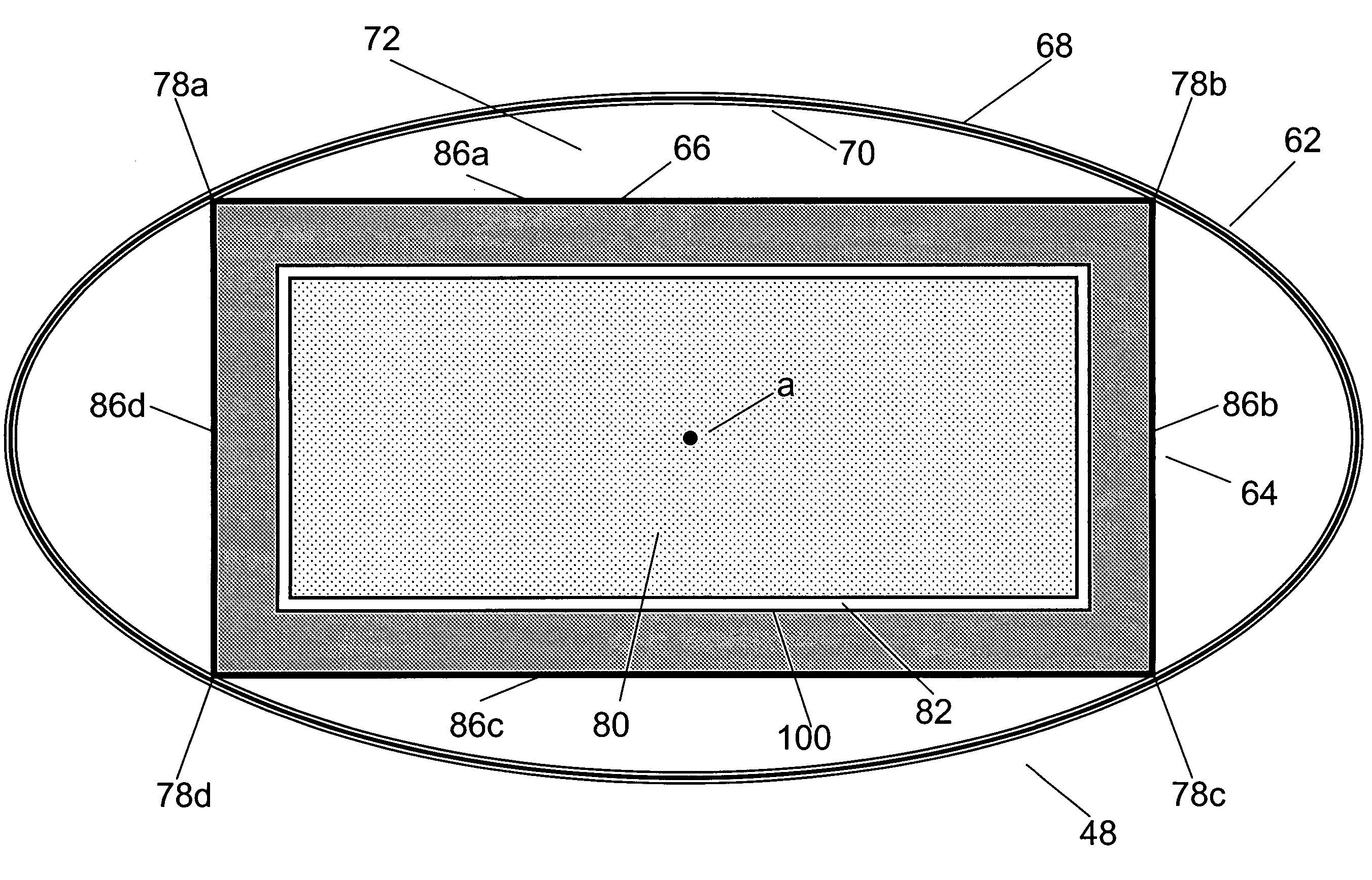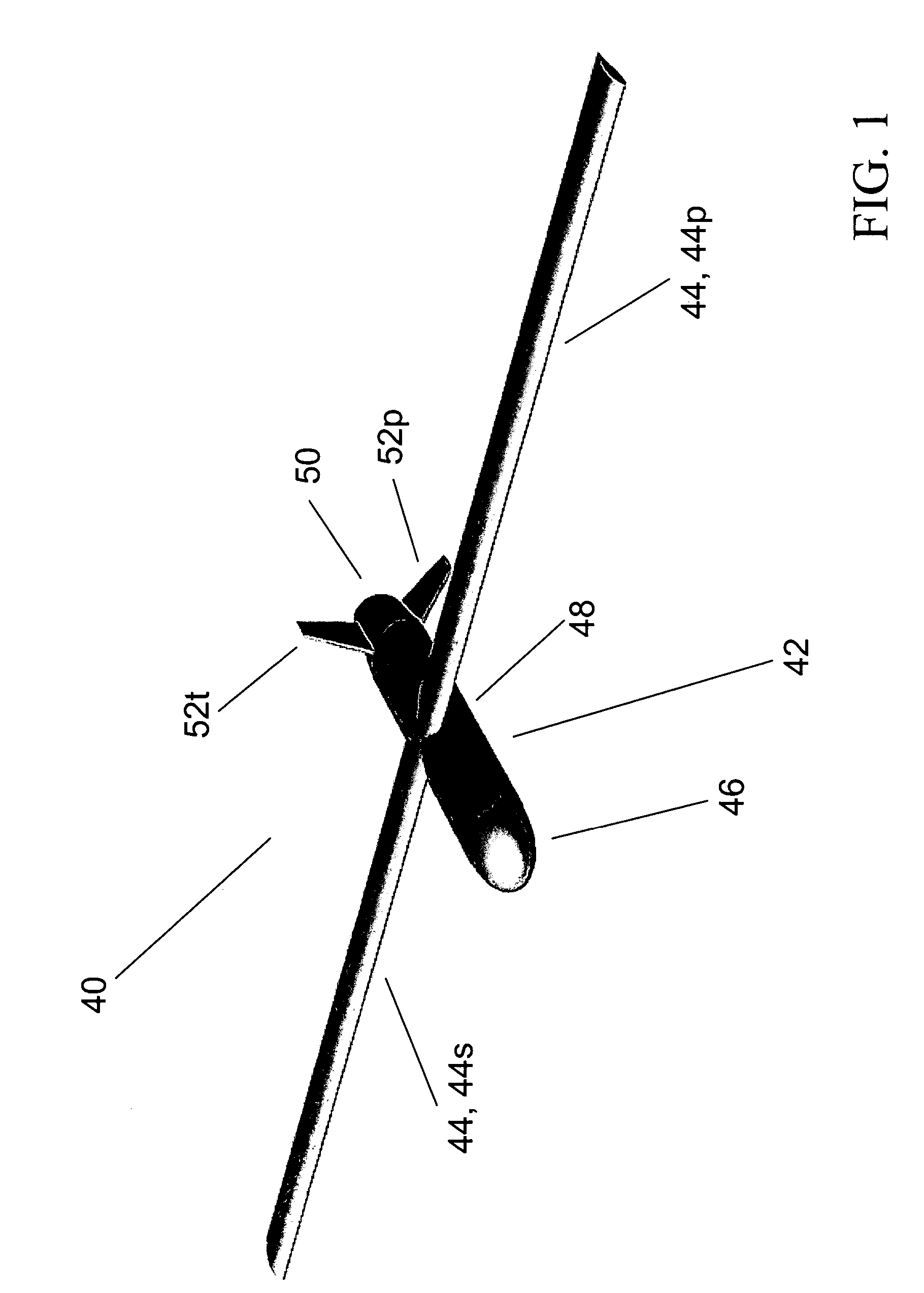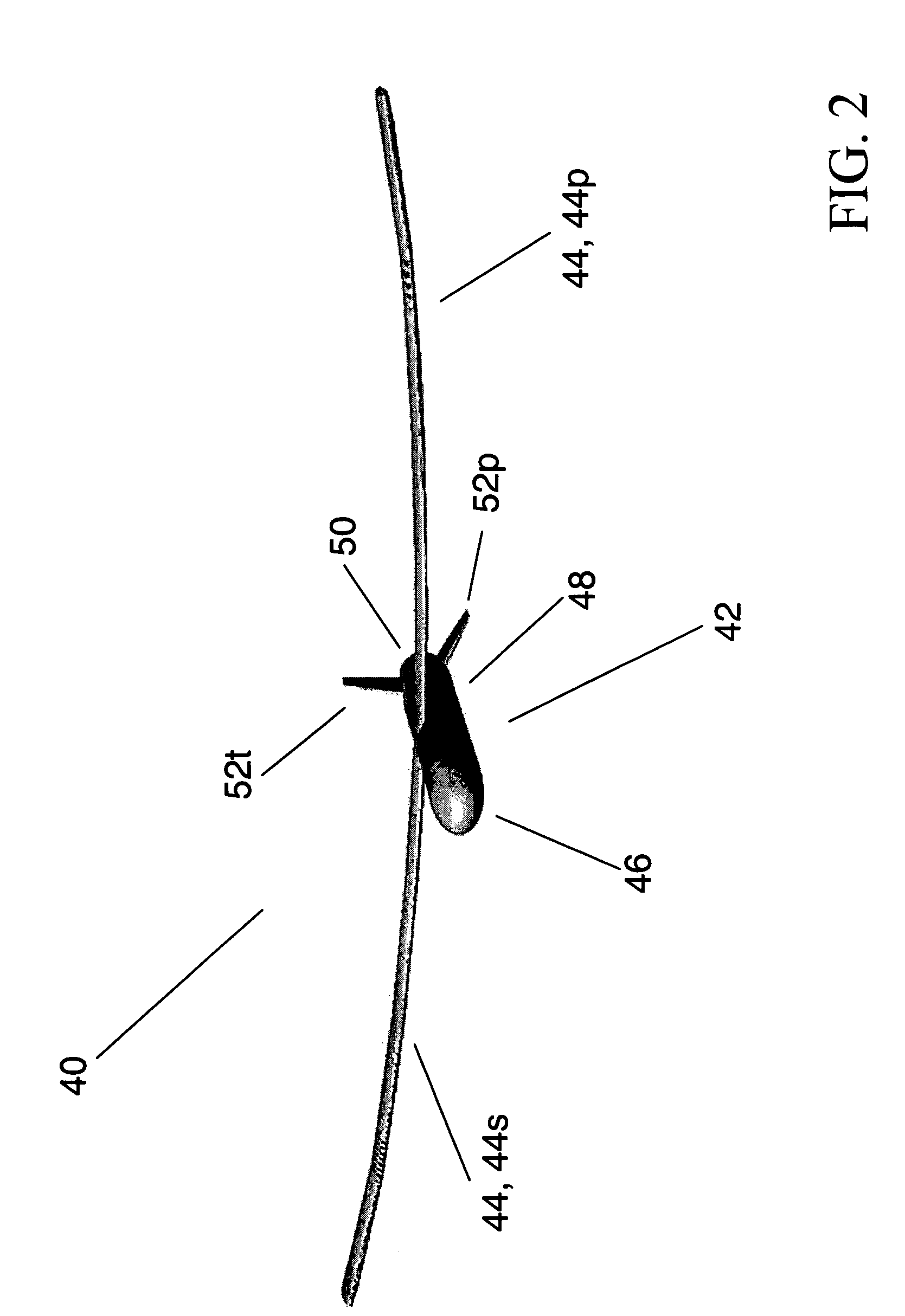Unmanned aerial vehicle for logistical delivery
a technology of aerial vehicles and logistical delivery, applied in the direction of vertical landing/take-off aircraft, transportation and packaging, gliders, etc., can solve the problems of insufficient safety, insufficient safety, and inability to meet the needs of logistics distribution, and achieve the effect of reliable, effective and economical
- Summary
- Abstract
- Description
- Claims
- Application Information
AI Technical Summary
Benefits of technology
Problems solved by technology
Method used
Image
Examples
Embodiment Construction
[0052]Referring now to FIG. 1 through FIG. 3, inventive glider 40 is an unmanned, disposable, mass-producible, structural vehicle. At least substantially made of composite materials, inventive glider 40 is relatively lightweight, yet is sufficiently robust to withstand loads associated with launch (especially, rocket launch), flight, landing and carrying cargo. Inventive glider 40 is sufficiently versatile to accommodate different launch methodologies. It can support two-hundred-mile military logistics missions, and allows for range variations.
[0053]Inventive glider 40 includes a body 42 and a pair of wings (airfoils) 44, viz., port wing 44p and starboard wing 44s. Body 42 includes three body sections, viz., a nose 46, a fuselage 48 and a tail 50. Fuselage 48 is attached flush to rounded nose 46 at the front end 74 of fuselage 48, and is attached flush to tail 50 at the back end 76 of fuselage 48. Tail 50, the entire empennage assembly, includes casing 96 and three stabilizers 52p, ...
PUM
 Login to View More
Login to View More Abstract
Description
Claims
Application Information
 Login to View More
Login to View More - R&D
- Intellectual Property
- Life Sciences
- Materials
- Tech Scout
- Unparalleled Data Quality
- Higher Quality Content
- 60% Fewer Hallucinations
Browse by: Latest US Patents, China's latest patents, Technical Efficacy Thesaurus, Application Domain, Technology Topic, Popular Technical Reports.
© 2025 PatSnap. All rights reserved.Legal|Privacy policy|Modern Slavery Act Transparency Statement|Sitemap|About US| Contact US: help@patsnap.com



